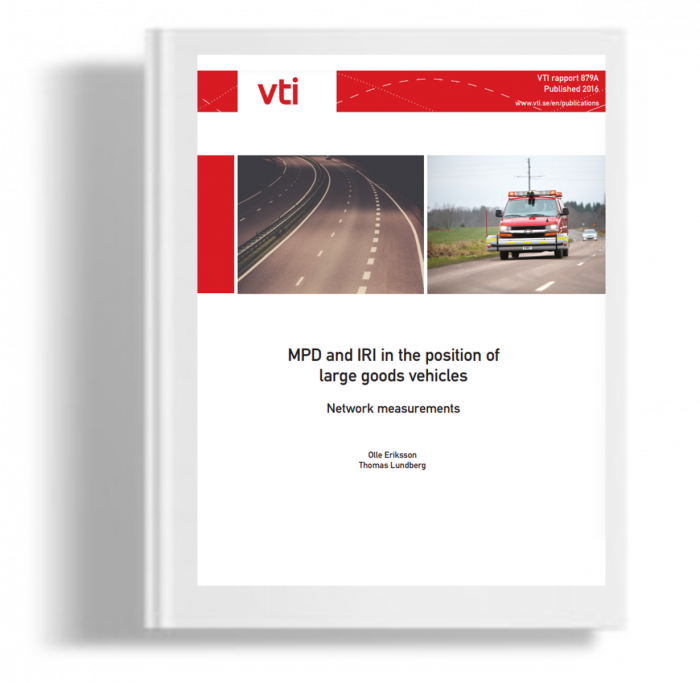Kami menggunakan cookies untuk membuat pengalaman Anda lebih baik. Untuk mematuhi petunjuk e-Pribadi yang baru, kami perlu meminta persetujuan Anda untuk menyetel cookies. Pelajari lebih lanjut .
MPD and IRI in the position of large goods vehicles : Network measurements
Monitoring of the state road network in Sweden includes the longitudinal measurements of the International Roughness Index (IRI) and Mean Profile Depth (MPD). This data can be used to predict values associated with rolling resistance, comfort, and vehicle wear. The paths of the measurements correspond to the surface contact points of the wheels of a light passenger vehicle. In Sweden, lateral position comparisons made between medium and large goods vehicles show that right-wheel track positions are not similar. This applies to larger and wider roads (typical motorways and other wide main roads). Knowledge of the surface conditions (IRI and MPD) at the surface contact points associated with a large goods vehicle would prove to be useful when predicting e.g. rolling resistance for large goods vehicles on entire or local road networks.
Monitoring of the state road network in Sweden includes the longitudinal measurements of International Roughness Index (IRI) and Mean Profile Depth (MPD). This data can be used to predict values associated with rolling resistance, comfort and vehicle wear. The paths of the measurements correspond to the surface contact points of the wheels of a light passenger vehicle. In Sweden, lateral position comparisons made between medium and large goods vehicles show that right wheel track positions are not similar. This applies to larger and wider roads (typical motorways and other wide main roads). Knowledge of the surface conditions (IRI and MPD) at the surface contact points associated with a large goods vehicle would prove to be useful when predicting e.g. rolling resistance for large goods vehicles on entire or local road networks. If these conditions are not measured, it is important to know how they differ from the values in the measured path. Using this knowledge VTI’s measurement vehicle was equipped with two extra texture lasers which were mounted to the right of the ordinary texture laser in the right wheel track. Data was collected on a road network with mixed categories of road standard, from secondary roads to motorways. During the study, differences in IRI and MPD values were analysed. Values corresponded to the position of light passenger vehicles right wheel paths and two other paths 25 centimetre and 45 centimetre further out to the right (position of medium and large goods vehicles). The possibility of predicting local differences (shorter sections) and average differences was analysed. A statistical analysis procedure for calculating the mean difference and an error margin is suggested. Results showed that although it is very difficult to explain or predict local differences, average differences can be estimated.

